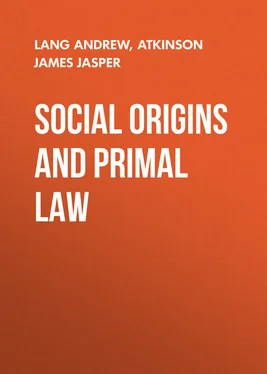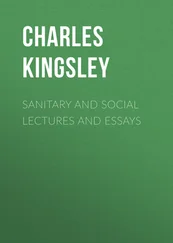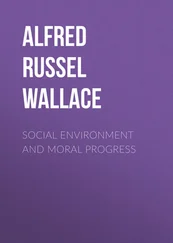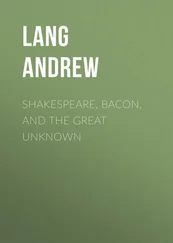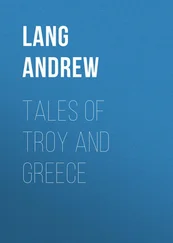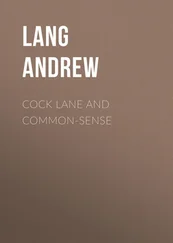Andrew Lang - Social Origins and Primal Law
Здесь есть возможность читать онлайн «Andrew Lang - Social Origins and Primal Law» — ознакомительный отрывок электронной книги совершенно бесплатно, а после прочтения отрывка купить полную версию. В некоторых случаях можно слушать аудио, скачать через торрент в формате fb2 и присутствует краткое содержание. Жанр: foreign_antique, foreign_prose, на английском языке. Описание произведения, (предисловие) а так же отзывы посетителей доступны на портале библиотеки ЛибКат.
- Название:Social Origins and Primal Law
- Автор:
- Жанр:
- Год:неизвестен
- ISBN:нет данных
- Рейтинг книги:3 / 5. Голосов: 1
-
Избранное:Добавить в избранное
- Отзывы:
-
Ваша оценка:
- 60
- 1
- 2
- 3
- 4
- 5
Social Origins and Primal Law: краткое содержание, описание и аннотация
Предлагаем к чтению аннотацию, описание, краткое содержание или предисловие (зависит от того, что написал сам автор книги «Social Origins and Primal Law»). Если вы не нашли необходимую информацию о книге — напишите в комментариях, мы постараемся отыскать её.
Social Origins and Primal Law — читать онлайн ознакомительный отрывок
Ниже представлен текст книги, разбитый по страницам. Система сохранения места последней прочитанной страницы, позволяет с удобством читать онлайн бесплатно книгу «Social Origins and Primal Law», без необходимости каждый раз заново искать на чём Вы остановились. Поставьте закладку, и сможете в любой момент перейти на страницу, на которой закончили чтение.
Интервал:
Закладка:
MR. SPENCER'S THEORIES OF THE BISECTION
It will be noted that Mr. Spencer's original totem groups existed for magical purposes only, and were not exogamous.
'The traditions of the Arunta tribe point to a very definite introduction of an exogamic system long after the totemic groups were fully developed, and, further, they point very clearly to the fact that the introduction was due to the deliberate action of certain ancestors. Our knowledge of the natives leads us to the opinion that it is quite possible that this really took place, that the exogamic groups were deliberately introduced so as to regulate marital relations.'
The Arunta 'exogamic groups' are 'classes,' and 'phratries,' the totem does not now regulate marriage among the Arunta. I shall later try to show, that, originally, totems did regulate marriage, among the Arunta. But here we find Mr. Spencer averring that possibly 'the exogamic groups were deliberately introduced so as to regulate marital relations' among the Arunta. This opinion surprises us, if we hold that exogamy was, in its original forms, the result, not of a deliberate enactment, but of gradual and unconscious processes, to which, later, conscious modifications have been added. Mr. Spencer, despite the passage cited, is obviously of the same opinion, for he proceeds to remark, 'By this we do not mean that the regulations had anything whatever to do with the idea of incest, or of any harm accruing from the union of individuals who were regarded as too nearly related… It can only be said that far back in the early history of mankind, there was felt the need of some form of organisation, and that this gradually resulted in the development of exogamous groups.'
This statement must remind us of what the ancient ballad sings about Lord Bateman:
He shipped himself all aboard of a ship,
Some foreign country for to see.
The scholiast (Thackeray, I think) explains, 'some foreign country he wished to see, and that was the extent of his desire: any foreign country would serve his purpose, all foreign countries were alike to him.' In the same way, long ago, the ancestors of the Australians 'felt the need of some form of organisation,' and that was the extent of their desire; any organisation would serve their purpose. Nevertheless, Mr. Spencer also says that, quite possibly, 'the exogamic groups were deliberately introduced so as to regulate marital relations.' But exogamic groups can regulate marital arrangements in one way only – that is, by introducing exogamy. Yet Mr. Spencer remarks that 'the development of exogamic groups' gradually resulted from some organisation of unknown nature. I am unable to reconcile Mr. Spencer's statements with each other. The 'bisection' of his theory could not, I fear, be 'gradual.'
Mr. Frazer, in 1899, begins with numerous totem groups, primarily and originally arranged for mere purposes of co-operative magic, in the social interests of a large friendly tribe, itself no primitive institution, one thinks. Then he supposes that the exogamous bisection occurred (and why did it occur?), and then 'if the existing totem groups were arranged, as they naturally would be, some in one of the two new classes, and the rest in the other, the exogamy of the totem groups would follow, ipso facto .' 99 99 J. A. I. , N.S. i. 284-285.
Mr. Frazer does not here pretend to guess why the bisection occurred. The rest is quite obvious: but it is unavoidably inconsistent with Mr. Frazer's earlier theory, that a tribe begins (or that the Thlinkets began) with two original totem groups, made them exogamous, and then 'subdivided' them up (or did they merely swarm off?) into many totem groups. It is against that almost universal theory, in 1899 abandoned (as I conceive) by Mr. Frazer, that I have so long been arguing. There was not first an exogamous bisection of a tribe, or the addition of the exogamous rule to two 'original clans,' or totem groups, and then the subdivision of each of the two sections into a number of totems. This cannot have occurred. Totems, I venture to think, did not come in that way, but pre-existing totem kins, granting the bisection, might fall into one or other phratry, if they had always been exogamous.
ADVANTAGES OF THE SYSTEM HERE PROPOSED
On my system, as has been already stated, the origin of exogamy may have been sexual jealousy, in small primitive groups, perhaps aided by 'sexual tabu,' with the strange superstitions on which it is based, and these causes would be strengthened enormously by the totem superstition, later. The totem name would now be the exogamous limit. The 'phratries' might result, quite naturally, and even gradually, now in one region, now in another, from the interlocking and alliance, with connubium , of two large friendly local totem groups, an arrangement of which the advantages are so obvious that it might spread by way of imitation and accretion.
This view of the possible origin of what is usually called the 'bisection' of 'the undivided commune' had already been suggested by the late Mr. Daniel McLennan. 100 100 Studies in Ancient History , second series, p. 605.
Writing before our information was so full as it now is, he says, as to the two 'phratries' Kumite and Kroki (answering to Matthurie and Kirarawa), 'were it worth while to make surmises, it would not be unreasonable to surmise that at Mount Gambier two separate local tribes 101 101 Local totem groups, in my theory.
containing different totem kindreds had, through the operation of exogamy and female kinship, become welded into one community.' Mr. Daniel McLennan, unluckily, inherited his brother's feud against Mr. Fison, and he opposed all that gentleman's doings. Later research has corroborated many of Mr. Fison's facts, and extended the range of their influence. On this point, however – namely, that the 'phratries' are not the result of a bisection, but of an amalgamation – Mr. Daniel McLennan appears to have had a good case. He illustrates his theory, and mine, by remarks on a tradition of the tribes of Northern Victoria. 102 102 Brough Smyth, Aborigines of Victoria , i. 423-424.
The exogamous 'phratries' of these tribes are Eagle-Hawk and Crow. The tradition represents these birds as hostile creative powers. They made peace on the terms 'that the Murray blacks should be divided into two classes' ('phratries'), 'the Makquarra, or Eagle-Hawk, and the Kilparra, or Crow… Out of the enmities' (of the original Crow and Eagle-Hawk) 'arose the two classes, and thence a law governing marriage among these classes.' This tradition, it will be observed, espouses the theory of a bisection, deliberately made of 'the Murray blacks,' into two intermarrying and exogamous classes. Mr. McLennan writes, 'But what the tradition suggests is, not that the Crow and Eagle agreed to divide one tribe into two, with a view to the better regulation of marriage, but that Crow and Eagle or Eagle-Hawk were tribes (and they might have been constituted in the ordinary Australian way) which long waged war against each other, and that at length there came peace, and then their complete interfusion by means of friendly marriages.' The tradition asserts the reverse; it adopts, or rather it forestalls, the scientific theory of a 'bisection' of the Murray blacks, not the amalgamation of two tribes (or large local totem groups). But I agree with Mr. McLennan in prefering, for the reasons given, the theory of an amalgamation. It is rather curious and interesting to observe that almost every scientific hypothesis about totems and 'classes,' which I am obliged to reject, has, in fact, been forestalled by the theories which the natives themselves express in their explanatory myths. Myths, I fear, are never in the right. 'The aborigines themselves,' says Mr. Howitt, 'recognise the former existence of the undivided commune in their legends, but,' he judiciously adds, 'I do not rely upon this as having the force of evidence.' 103 103 On the Organisation of Australian Tribes , p. 186.
Интервал:
Закладка:
Похожие книги на «Social Origins and Primal Law»
Представляем Вашему вниманию похожие книги на «Social Origins and Primal Law» списком для выбора. Мы отобрали схожую по названию и смыслу литературу в надежде предоставить читателям больше вариантов отыскать новые, интересные, ещё непрочитанные произведения.
Обсуждение, отзывы о книге «Social Origins and Primal Law» и просто собственные мнения читателей. Оставьте ваши комментарии, напишите, что Вы думаете о произведении, его смысле или главных героях. Укажите что конкретно понравилось, а что нет, и почему Вы так считаете.
